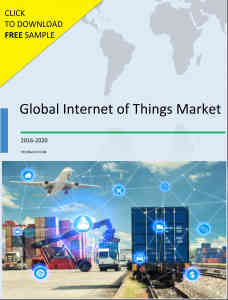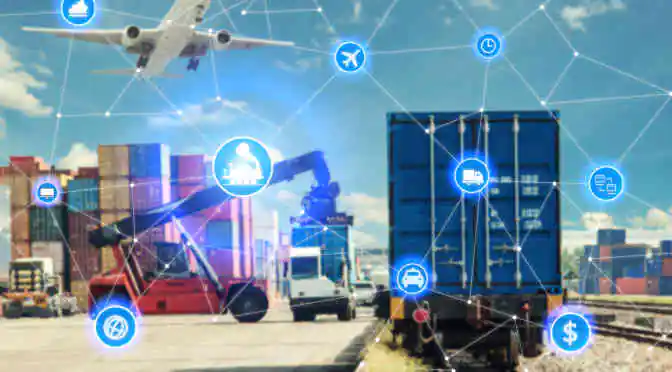Internet of Things (IoT), a system of connected things, is slowly but surely revolutionizing the way we live, work and play. From transportation to healthcare to small business management, IoT technology and its multiple applications are progressively becoming commonplace and inevitably essential to keeping up in today’s fast-paced world.
According to Statista, soon, the number of IoT-enabled devices will surpass the number of smartphones for the first time in history. It’s projected that there will be over 50 billion IoT-connected devices and 6 billion mobile phones in the world by the year 2020.
The connectivity revolution in education is on the move
IoT is changing everything, and the learning and education domains fall well within the gamut of this disruptive technology. The proliferation of connected devices coupled with improved, cost-effective technology platforms and adoption of common standards have only increased the rapid growth of IoT-enabled applications and capabilities in the education industry.
 The growth of IoT technology has had a positive impact on education, with the application of the former evolving from mere static applications to cutting-edge interactive classrooms. Here are the top five ways in which IoT applications in education is changing the way educators teach and students learn.
The growth of IoT technology has had a positive impact on education, with the application of the former evolving from mere static applications to cutting-edge interactive classrooms. Here are the top five ways in which IoT applications in education is changing the way educators teach and students learn.
1) Creating a safe environment for learners
The physical security and safety of students is paramount for both educators and parents. Consequently, there are many ways in which educational institutions have invested in order to enhance the safety of their students. Walkthrough metal detectors and security systems are some easy examples. With empowered cameras, sensors, RFIDs and connected devices, the monitoring and surveillance of educational premises becomes easier.
Instant alerts, notifications, and configured actions would be a substantial addition to the safety and security of schools and other educational institutions. In time, we will witness a range of smart locks that can monitor and control facilities intelligently, and detect and report anomalies without delay.
2) A single connected network
Discovering interoperability between systems and devices is one of the major blocks in the supply chain connected space and even more so in education. A powerful IoT-enabled device is sitting in nearly every student’s pocket: the smartphone. In the future, schools and campuses will take advantage of the context in which teachers and students are already operating. A simple mobile application, networked with a system of beacons would open the doors to a standard network where students could receive links to lesson plans, reminders, and assignments.
3) Engaging learning experience
Educators always look to discover new ways to connect with their students through engaging lesson plans, new classroom projects, relevant discussions and innovative teaching methods. Similarly, many institutions have widely adopted digitized versions of teaching channels like the standard whiteboard. Smart interactive whiteboard allows teachers to collaborate and share content seamlessly.
Interactive boards can collect, acknowledge, and reciprocate information, thereby streamlining and accelerating the overall learning experience. This technology is the perfect example of how IoT-connected teaching tools can make the learning process more engaging.
4) Aiding special-needs students
For millions of special-needs students, IoT technology can provide multiple benefits from education resources that might not be accessible in the regular classroom settings. According to statistics, 6.6 billion students in the world have special needs and 35 percent of them have a specific disability. Connected IoT devices help special-needs students overcome the serious challenges they face pertaining to their physical and cognitive limitations.
Today, there are mobile applications that help students with reading-related disabilities to learn and understand. There are voice recognition apps that can help students with writing difficulties. Likewise, communication technologies powered by IoT are capable of extending the boundaries of a typical classroom, so that disabled students can access study materials from any part of the planet.
5) Improving the efficiency of the school administration
From roll calling to transferring information from class to the central office, the administrative team of every educational institution spends a large amount of time on repetitive, day-to-day tasks. In this context, IoT connected devices offer practical solutions that increase efficiency and save time. Indeed, streamlining regular operations using IoT helps management and teachers focus more on teaching and less on menial tasks.
 For instance, RFID technology can track school resources such as lab equipment and projectors. Similarly, connected devices can detect the presence of an individual student and eliminate the need for taking attendance manually. IoT can also help in reducing energy costs by monitoring energy usage. Overall, connectivity can help school administrations reduce overhead costs and improve productivity. Additionally, connected devices play a pivotal role in managing inventory in educational institutions. Connected sensors in storage spaces can alert administrators when stocks like desks, cleaning materials, and textbooks are running low.
For instance, RFID technology can track school resources such as lab equipment and projectors. Similarly, connected devices can detect the presence of an individual student and eliminate the need for taking attendance manually. IoT can also help in reducing energy costs by monitoring energy usage. Overall, connectivity can help school administrations reduce overhead costs and improve productivity. Additionally, connected devices play a pivotal role in managing inventory in educational institutions. Connected sensors in storage spaces can alert administrators when stocks like desks, cleaning materials, and textbooks are running low.
Wrapping it up: IoT is streamlining education
The integration of IoT with the global education system will happen gradually, and in very nuanced ways. Some institutions may use it to harness data or save money, whereas others will likely use it to make students highly tech-literate.
Shifting the focus on the education sector to include IoT technology will mean a massive step away from our current methods of imparting and receiving education. In this updated scenario, the associated businesses that will have the highest success will be those that offer reasonable and practical tech products that teachers, administrators, and students can firmly get behind.



